Disclosure: We may get commissions for purchases made through links in this post.
Leaves and moisture can be an unwanted combination on your pavers. If left alone, the leaves’ pigments will stain the surface. So how can you remove leaf stains from your pavers? We did the research for you to learn the answer to that question and here’s what we found.
Before attempting to remove leaf stains from pavers, make sure that you’re wearing protective equipment to prevent harm from using fairly harsh chemicals like bleach. Once prepared, follow these steps to remove the pigmentations:
- Use a garden hose to rinse the paver and spread the water across the surface with a push broom.
- Spray diluted vinegar onto the leaf stains and other gunk and let the solution sit for 30 minutes.
- Scrub the stained areas with a nylon brush.
- Mop the paver to remove excess water and vinegar.
Take note that some leaf stains might be quite stubborn, so they may require more than these steps to remove. Keep reading as we talk about your options on how to eliminate the leaf stains on your pavers in greater detail.
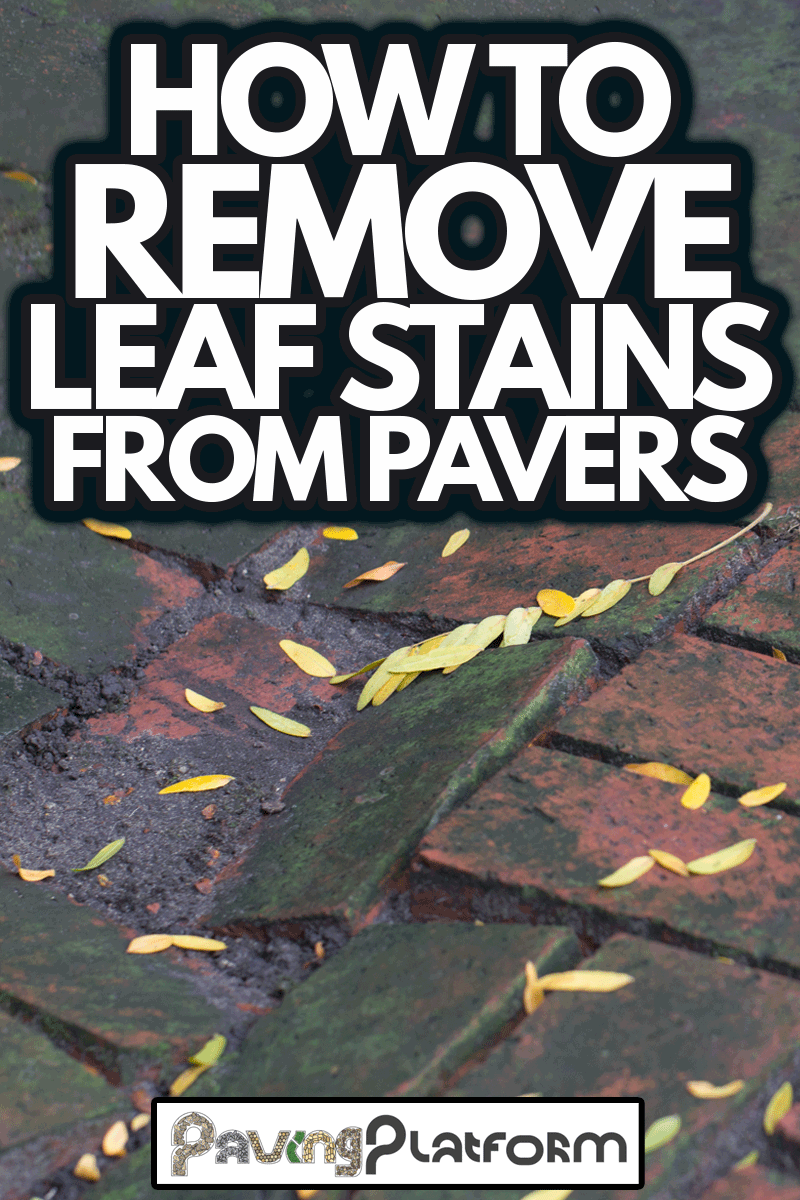
Are Leaf Stains Permanent?
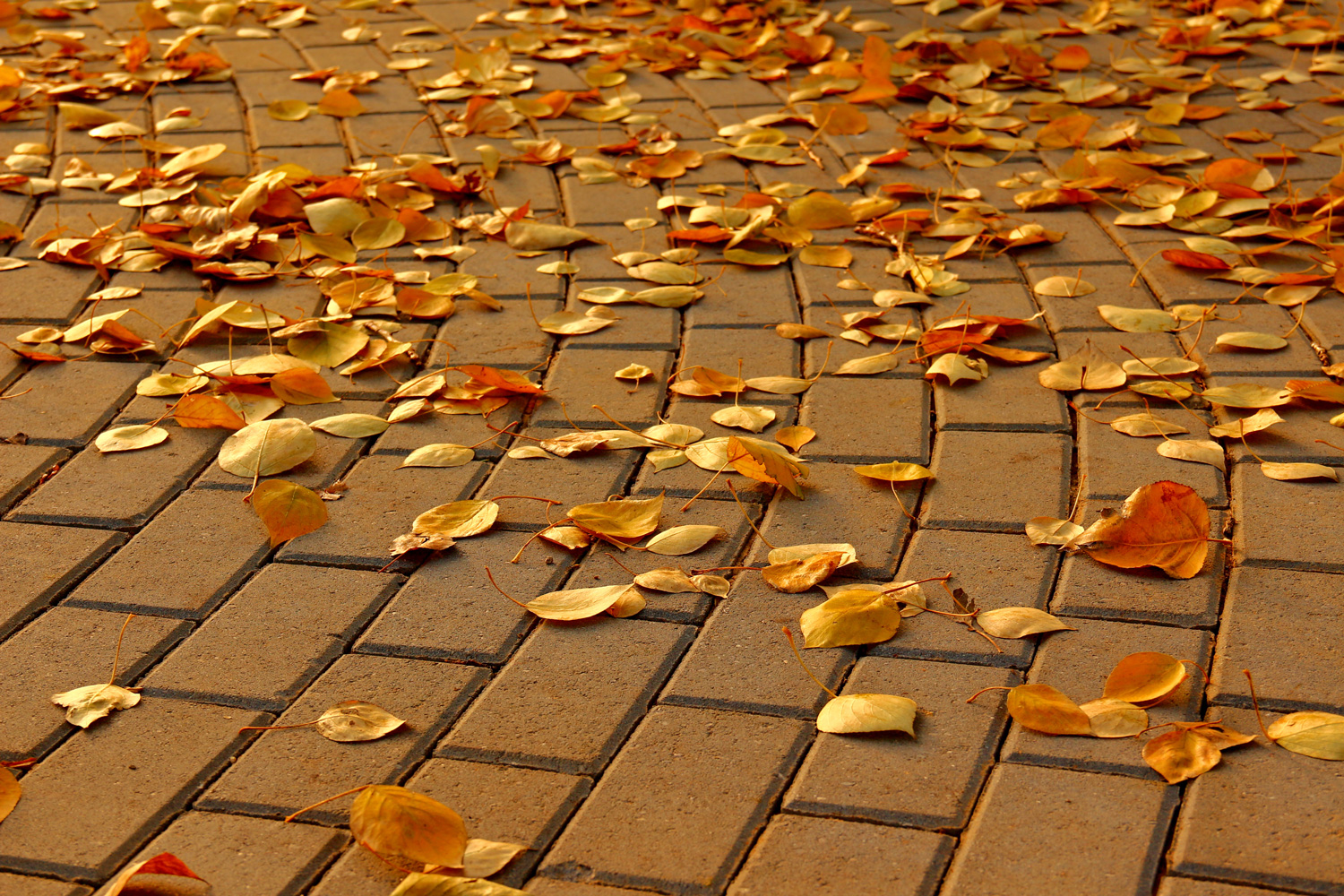
Unlike stains from certain commercial or industrial products, the blemish left behind by stains is often temporary. In particular, property owners can either prevent or minimize the leaf stains on their different pavers.
How Do You Remove Stains From Pavers?
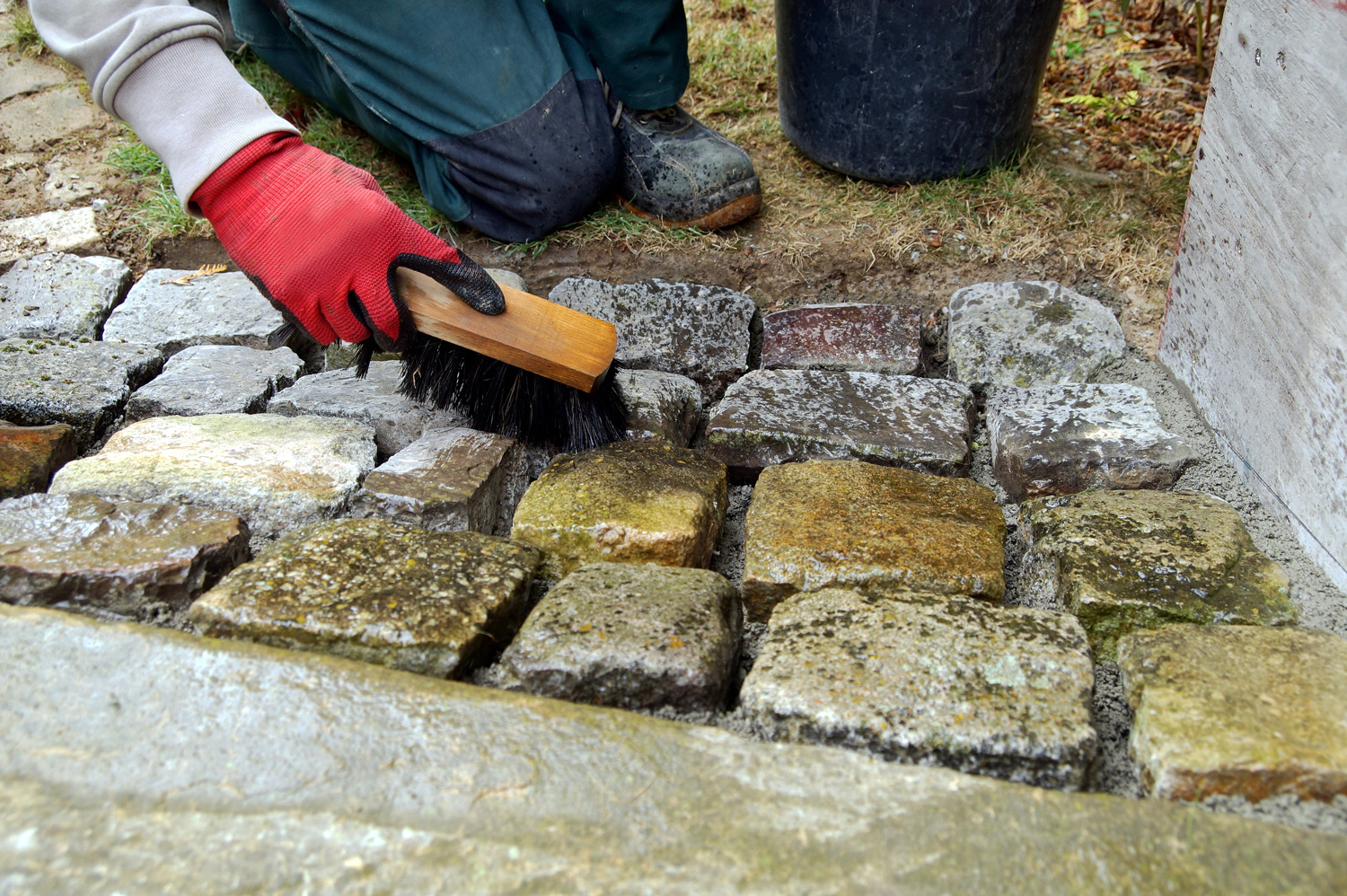
Take note that the precise steps of removing stains from pavers often depend on the primary materials of these surfaces. Additionally, spot cleaning might not be appropriate since it may result in an uneven finish. Instead, choose to clean the paver’s entire length for this stain removal undertaking.
Also, make sure you’re wearing protective gear. You might opt to use disinfectants with harsh compounds like bleach to help clean your property’s paver. If so, wear equipment like a respirator, boots, gloves, and mask to prevent these chemicals from harming you.
Then, dilute vinegar and place the mixture in a spray bottle. This organic solution can help reduce and eliminate leaf stains from different surfaces.
After finishing those preparations, here are the steps to clean and remove leaf stains from stone pavers:
What You’ll Need
- Garden hose
- Push broom
- Diluted vinegar mixture
- Nylon brush
- Mop
- Oxygenated bleach solution (optional)
- Vinegar (optional)
- Baking soda (optional)
Step-by-Step Guide
- Rinse the paver with the garden hose. Then, spread the water across the surface with a push broom.
- Spray the diluted vinegar solution on stubborn dirt and stains. Let it sit for about 30 minutes before proceeding to the next step.
- Scrub the areas that you sprayed with the vinegar mixture with a nylon brush.
- Mop the paver to help remove excess moisture from those locations.
- If stains remain at this point, wash them with an oxygenated bleach solution by mixing sodium bicarbonate with water in a bucket.
- Spread the oxygenated bleach solution over the stained area with the nylon brush.
- If leaf stains persist, mix baking soda with vinegar to form a paste. Cover the stained regions with this paste and use the nylon brush to scrub it off.
- Use the garden hose to remove remnants of dirt, stain, and other loose materials on the paver.
You may also use a pressure washer to help remove persevering filth and stain from the stone paver. Make sure that you’re using the correct settings or you might scar or gouge the material.
On the other hand, it is also possible to wait it out and let nature run its course to remove stains on pavers with snow and rain. However, this option might only be possible for regions experiencing cold and wet climates frequently. Some locales may find the leaf stains to persevere on pavers longer than expected because of their dry and hot weather.
You might also find it interesting to learn about removing ice and snow on pavers. If so, read our post on the best ice and snow melt to use on pavers to gain insight on some great products.
Check out this pressure washer on Amazon.
How To Prevent Leaves From Staining Pavers?
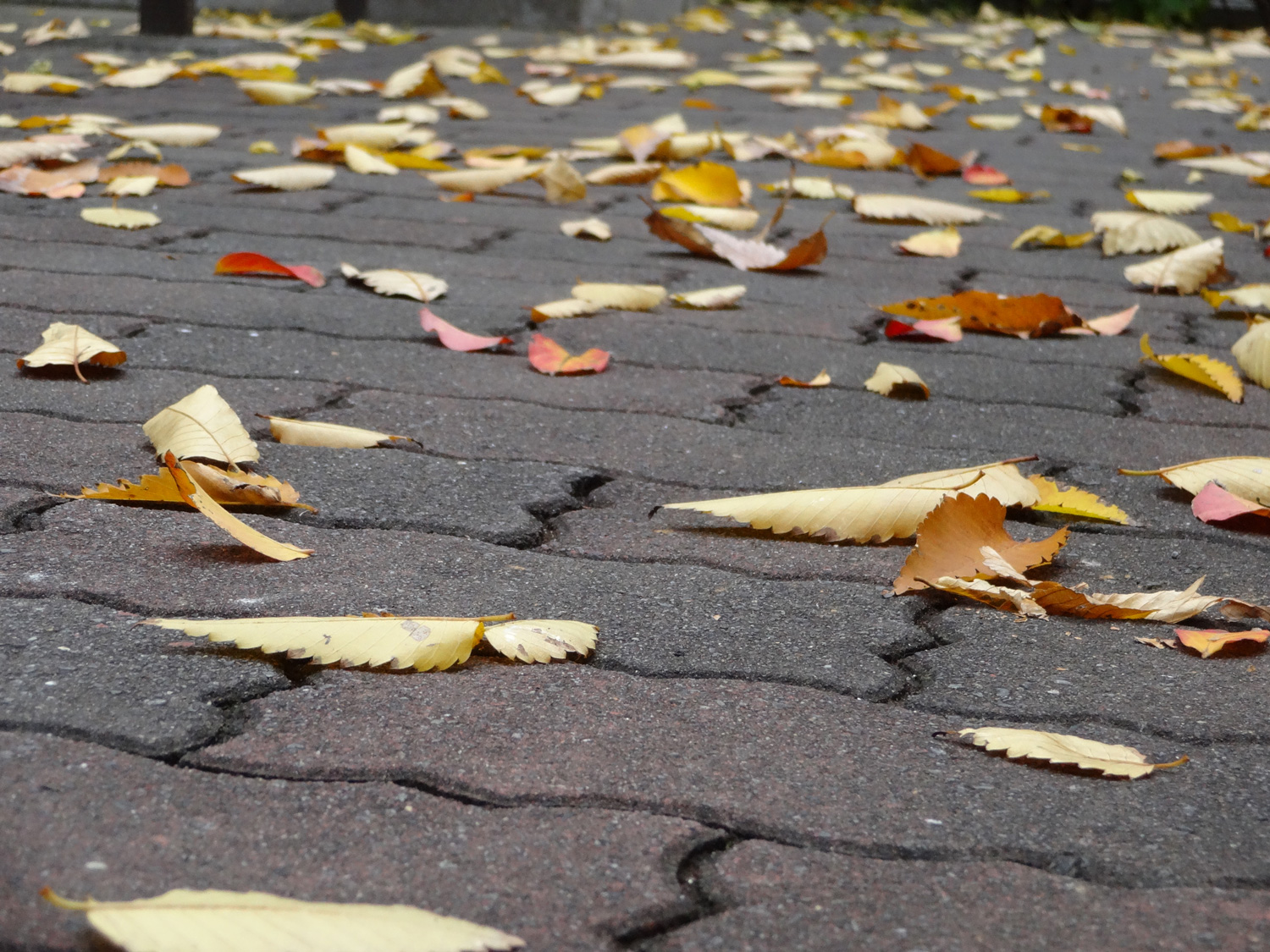
Use silane/siloxane sealants on pavers to help prevent leaves from staining these surfaces. Make sure, though, that this chemical solution is safe to use on your particular paver. It is relatively safe to use on brick or concrete, but it might harm other materials. You should do a spot check on a fairly hidden portion of your paver before proceeding with this job.
If you deem it safe to use a silane/siloxane sealant, take note of the following extra precautions before you continue:
- Use a pressure washer to remove loose dirt, dust, and debris from the paver. Let the surface dry for about 24 to 36 hours before applying the sealant.
- Ask your paver manufacturer or installer if it’s okay to seal the surface. Some paver materials can be sealed upon installation. Other pavers may only permit sealing after a year from the installation date.
- Apply two coats of the sealant for proper results.
Check out this silane/siloxane sealant on Amazon.
Can You Use Bleach To Clean Pavers?
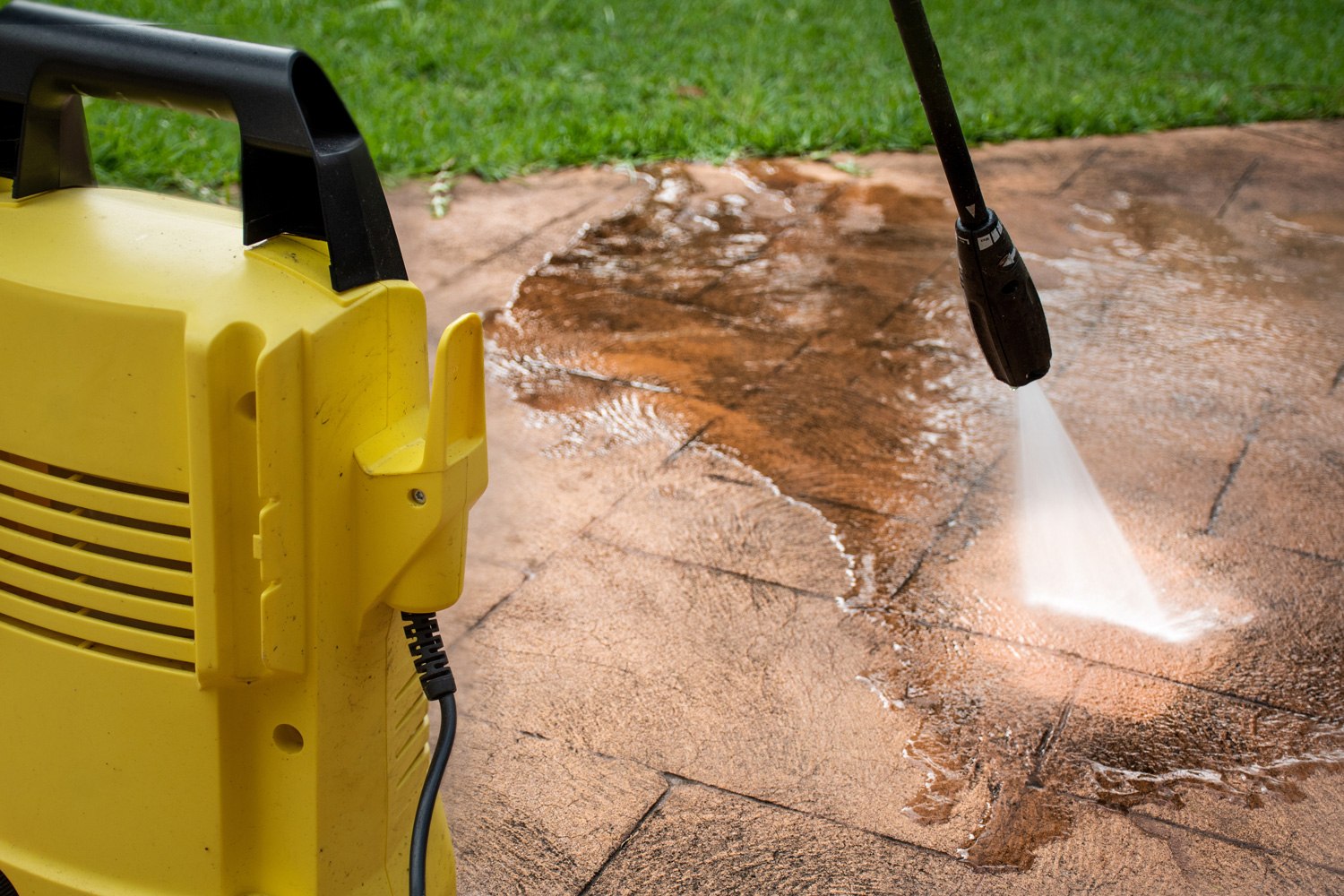
Concentrated bleach can damage some pavers, particularly those made of brick. However, you can still use this chemical if you dilute it. A cup of bleach should suffice for each gallon of water used to clean pavers.
Still, it’s advisable to exercise caution in applying diluted bleach to pavers. Since bleach is a fairly potent disinfectant, it can discolor or fade materials, ruining the landscape’s aesthetics.
Additionally, be careful when applying bleach to pavers, particularly if these surfaces are near plants. If used haphazardly, this chemical can harm and even kill florae.
If you’re still at the planning stage of installing brick pavers on your driveway, you can read our post on Conventry brick to check if this material is ideal for your needs.
Can You Recolor Pavers?
Lot owners can recolor their pavers if these surfaces become severely discolored from different sources, including significant pigmentations from fallen leaves. Take note that the recoloring method should depend on the material used to create the paver.
For example, property owners can use sealers and/or masonry stains to recolor brick pavers. For stone pavers, latex acrylic stucco paint is a viable option. As for limestone pavers, stone colorants (not color enhancers) are the ideal choice.
Check out this stucco paint on Amazon.
How Do You Make Old Pavers Look New?
The correct paver sealer can help old pavers look as if installers finished the job recently. Take note that this class of products is usable with the help of different equipment and techniques. But a garden pump sprayer often works well for this job.
With the pump sprayer, apply the paver sealant onto the surface. Make sure to coat the paver’s entirety or else some patches may appear. You’ll know if you did this operation properly if the outcome has a matte finish.
Check out this garden pump sprayer on Amazon.
Final Words
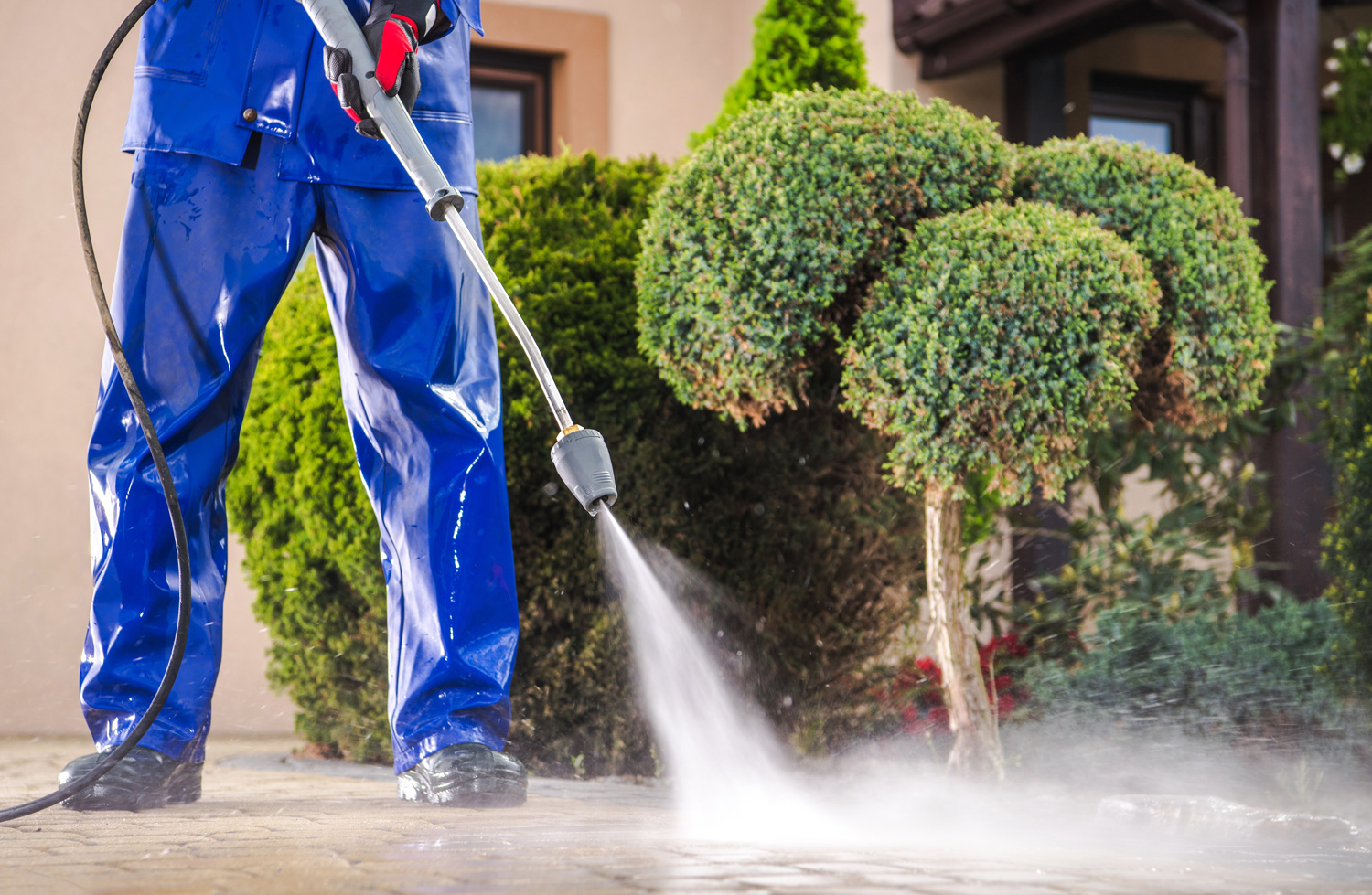
It's possible to leave leaf stains alone and let wet weather help remove leaf stains off of pavers. Property owners may also use solutions like diluted vinegar or bleach to eliminate these organic pigments. But make sure to have sufficient knowledge about paver materials before using chemical cleaners and disinfectants to prevent damaging the surface.





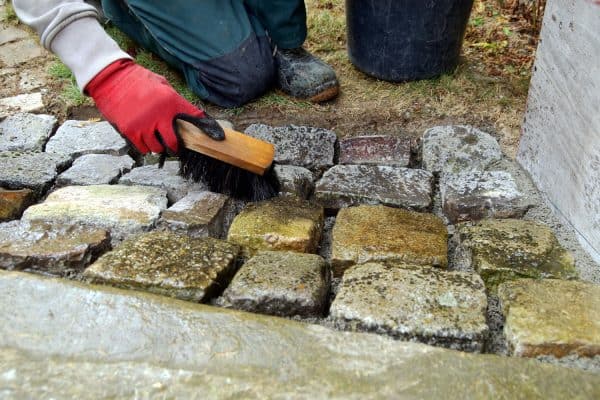
![Blue stone pavers on the garden patio, How To Clean Bluestone Pavers [Care & Maintenance Tips]](https://pavingplatform.com/wp-content/uploads/2022/03/Blue-stone-pavers-on-the-garden-patio-600x400.jpg)
![washing services - block paving cleaning with high pressure washer - Can You Pressure Wash Travertine Pavers? [Best Cleaning Methods]](https://pavingplatform.com/wp-content/uploads/2022/03/washing-services-block-paving-cleaning-with-high-pressure-washer-600x400.jpg)